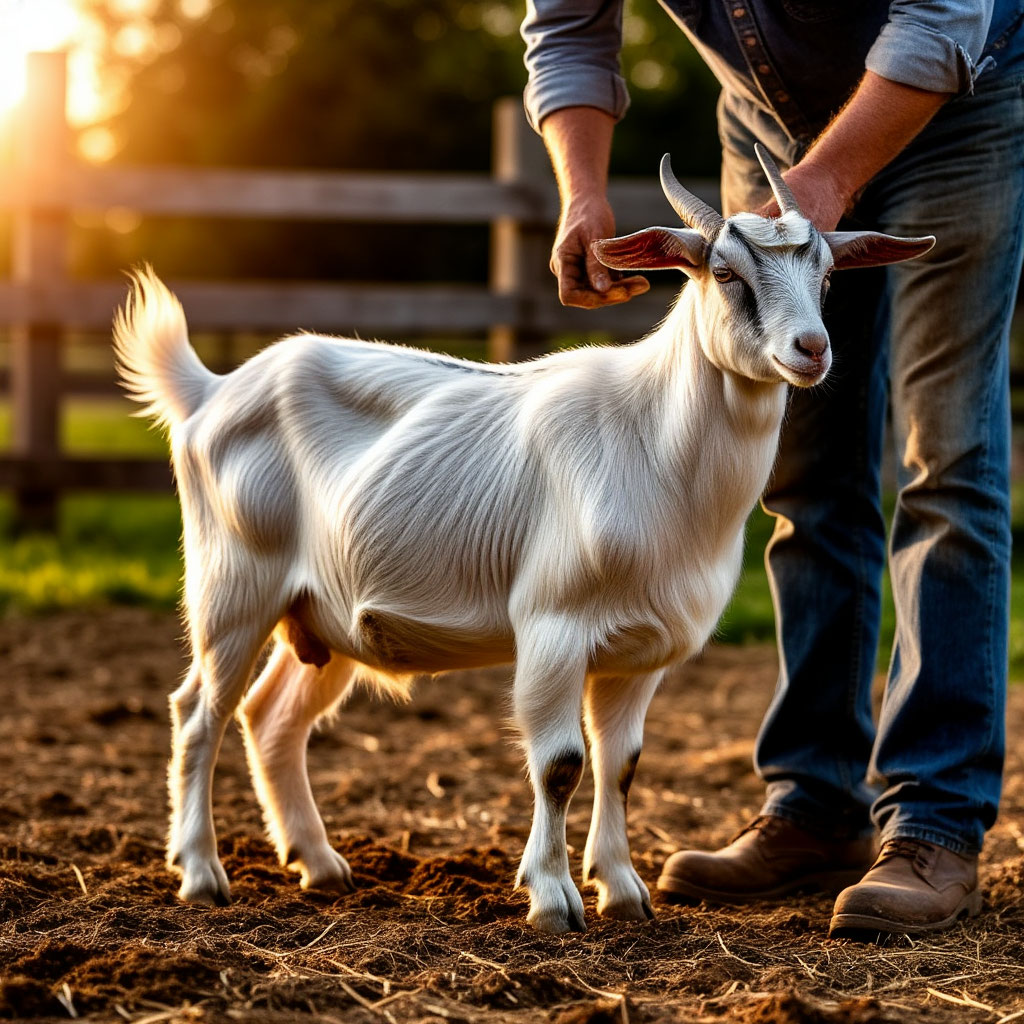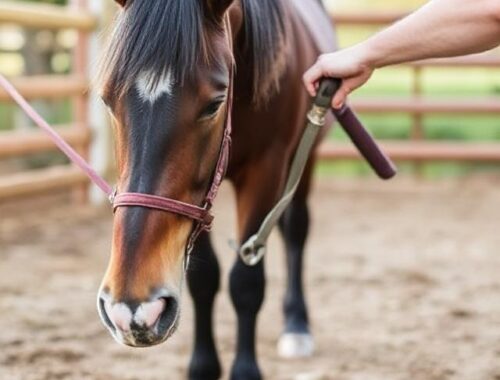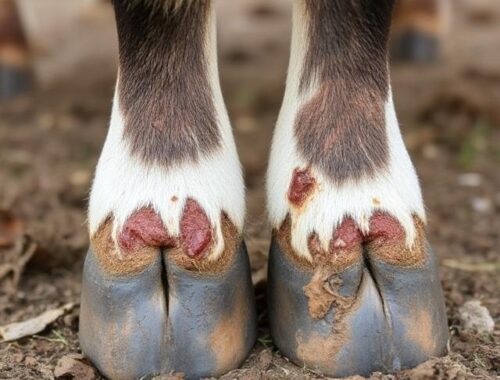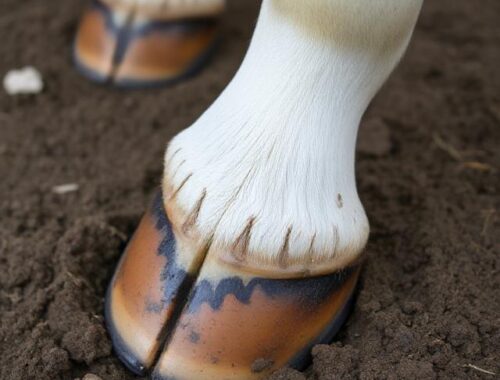
Daily Hoof Care Routine for Farm Animals: Tips Every Owner Should Know
Taking care of hooves isn’t the flashiest part of animal care, but it might be the most important. When your animals stand on solid, healthy hooves, everything else works better. They move more, eat better, and just feel good. And keeping hooves in good shape? It starts with building a simple, daily hoof care routine.

Why Daily Hoof Care Is Essential
Neglect a hoof for just a day or two, and things can spiral. A bit of packed-in mud invites bacteria. A tiny crack opens the door to an abscess. That limping goat? She probably needed a quick check two days ago. Making daily hoof inspection part of your rhythm prevents all that.
The truth is, hoof problems move fast. What you miss today might cost you in vet bills tomorrow. Pain causes stress. That stress cuts weight, reduces milk, and slows down breeding. It’s not just a hoof thing—it’s a whole-animal thing. That’s why sticking to a daily hoof care routine matters so much.
With regular hoof hygiene, your animals stay active. They handle rough ground better. You spot signs of hoof infection before they cause trouble. And best of all? You avoid those heartbreaking cases of hoof rot or lameness that keep them from living fully.
This habit takes minutes. But it changes everything. A consistent daily hoof care routine improves animal hoof wellness and sets your livestock up for long-term success.

Tools You’ll Need for Routine Hoof Maintenance
Before diving into hoof care for goats, horses, sheep, or cattle, get your setup right. Having the proper tools makes the job faster, safer, and a lot less frustrating. You don’t need much—just the basics.
Must-Have Tools for Your Hoof Kit:
- A sturdy hoof pick with a stiff brush
- Hoof knife or trimming shears (fit the species you work with)
- Clean rags or paper towels
- Disinfectant spray (something safe for livestock)
- Gloves (your hands will thank you)
- Optional: hoof rasp, hoof stand, copper sulfate for soaks
Keep your tools clean and dry. Toss them in a bucket or caddy you can grab on your way out to the barn. When everything’s in one place, hoof maintenance becomes part of the flow, not a separate chore.
And remember—using dull or dirty tools does more harm than good. Sharpen blades regularly. Swap out worn hoof picks. Treat this gear like you’d treat your favorite wrench or saddle.
How to Inspect Hooves for Common Issues
Hoof issues aren’t always dramatic at first. Some start as mild changes. Others show up suddenly. A proper daily hoof inspection helps you catch both.
Here’s a quick guide to what healthy and unhealthy hooves look like:
| What to Check | What It Might Mean |
|---|---|
| Heat around the hoof | Possible early infection or inflammation |
| Cracks or flares | Needs trimming or could split further |
| Dark, foul odor | Thrush or signs of hoof rot |
| Soft spots | May signal a brewing abscess |
| Limping or stiffness | Animal might be in pain |
| Dirty crevices | Perfect spot for bacteria to thrive |
The point of a good hoof care routine is to stop small things from becoming big problems. Spotting the early signs of hoof infection can keep your herd healthy without costly interventions. Some animals try to hide pain, so trust your eyes and hands. Add any odd finding to your notes.

Cleaning Techniques for Healthy Hooves
When it comes to cleaning hooves, a light touch can go a long way—but you do need to be thorough. Dirt, mud, and manure packed into a hoof aren’t just messy. They create the perfect storm for rot, thrush, and infections.
Start with your pick. Get into every groove but avoid stabbing or scraping too hard. That frog area? Be gentle. It’s sensitive and prone to damage if you dig too deep.
For goats and sheep, don’t skip the space between their cloven toes. That area collects grime fast and stays damp. For horses and cows, clean deep into the sole and heel. Hoof hygiene means no hiding places for bacteria.
If hooves are especially gross—like after a rainy pasture day—rinse them with warm water. Dry them completely. Damp hooves soften fast, and that’s when infections sneak in. Good cleaning hooves habits are a big part of preventing hoof rot before it starts.
Don’t forget to disinfect if you see any nicks or signs of infection. A quick spray stops things from spreading. That’s a key part of hoof care for goats and other livestock alike.
Establishing a Hoof Care Schedule
A daily hoof care routine sets the foundation. But not every job needs to happen every day. That’s where your hoof maintenance schedule comes in.
Set reminders based on species and the season. Hoof growth speeds up in warm months and slows in the cold. Wet weather adds risk. Adjust your checks and trims accordingly.
For horses, trimming every six to eight weeks keeps hooves balanced and strong. Goats? They often need a trim every two to four weeks, especially in muddy conditions. Cattle might go longer—two to three times per year—but they still need monthly checks.
Skip a scheduled check, and hooves get too long, which throws off posture. Overgrown feet split, twist, or trap dirt, all of which cause pain. Stick to the hoof maintenance schedule. Your animals will walk better, feel better, and avoid injury.
For young animals, ease them into the routine. Pick hooves daily even if they don’t need trims yet. It builds trust and makes things smoother as they grow.

Preventative Measures Against Hoof Problems
Great hoof care isn’t just about reacting. It’s about planning ahead. Preventing hoof rot, infection, or lameness takes a few smart moves.
Keep things dry. Muddy pens? Bad news. Wet stalls? Trouble. Moisture breaks down the outer hoof, making it soft and open to infection. Lay down clean bedding. Rotate grazing spots to avoid worn-down, soggy areas.
Diet plays a huge part in animal hoof wellness too. Minerals like zinc, copper, and biotin strengthen hoof walls. Don’t overdo grain—especially with goats and cattle. Too much leads to laminitis. Stick to balance, not bulk.
Think about exercise, too. Movement supports blood flow in the hoof, leading to tougher tissue and faster healing.
Good fencing helps more than you think. Sharp wire or loose boards can lead to injuries. Patch up potential hazards early.
And if one animal shows signs of hoof infection? Clean up fast. Quarantine if needed. Hoof problems spread quicker than you’d think. Staying consistent with your hoof care routine and making prevention part of the process will keep your animals safer.
When to Consult a Hoof Specialist
Sometimes, no matter how solid your hoof care routine is, you need backup. That’s where a farrier or vet comes in.
If you spot deep cracks, swelling, or pus—don’t wait. Those are signs of real trouble. Persistent limping means something’s hurting deep inside. If daily cleaning doesn’t help, it’s time to call in the pros.
Hooves that feel hot to the touch, smell awful, or bleed during trims? Not normal. Hoof hygiene should never leave your animal worse off than before. You’re not failing—some things just need expert hands.
Digital dermatitis, laminitis, or severe hoof rot can spread quickly and knock your herd out of commission. Catching it early, with help from someone trained, keeps your livestock safe.
Use professional support as part of your regular hoof maintenance schedule. It’s also wise to ask about horse hoof care tips and specific hoof care for goats, since each species has its own quirks.
Taking a few minutes each day for your hoof care routine can be the difference between a thriving herd and a barn full of problems. It’s not about perfection—it’s about showing up. Every pick, every check, every quiet moment looking for swelling or heat? That’s where real animal hoof wellness starts.
You don’t need fancy tools or a perfect system. Just stay consistent. Watch closely. React early. With a solid hoof maintenance schedule, clean habits, and a little patience, you’ll keep those hooves—and your animals—solid for the long haul. Every daily hoof inspection is a step toward stronger, longer-lasting livestock health.
You May Also Like

Top 5 Hoof Cleaning Mistakes and How to Avoid Them
June 26, 2025
Common Hoof Diseases in Livestock and How to Treat Them
June 26, 2025

